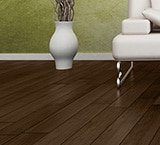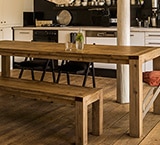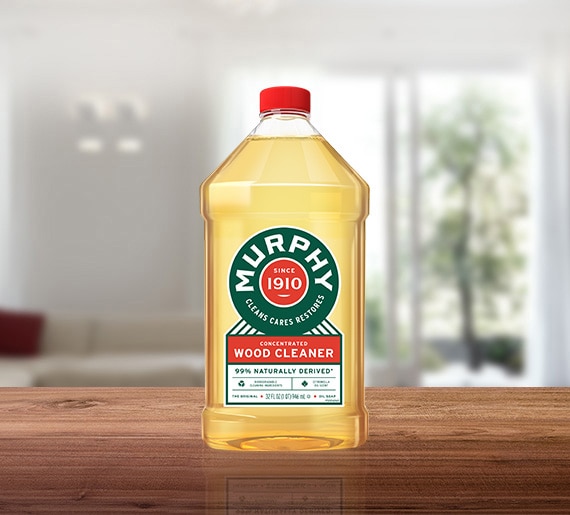HARDWOOD FLOORS & FLOORING
Kitchen Flooring Options: How to Decide What Works Best for You

If you're remodeling, you might find the number of kitchen flooring options to be mind-boggling. From wood, to tile to vinyl, determining which material will work best for your family can be an overwhelming task. Each material has its own unique benefits.
WOOD
Popular, Stylish and Easy to Clean
Wood floors in the kitchen have become ubiquitous over the past year. In fact, the National Kitchen And Bath Association concluded in last year's survey that wood was the most popular kitchen floor in 2013, and was expected to be in even greater demand last year.
You certainly have options if you commit to hardwood. Many homeowners are choosing wood flooring for their kitchen in the wake of an increase in open floor plans; the desire to have a floor blend one room with the next is a top priority for many. Because wood is so versatile, it can also coordinate with any type of design and decor. The material comes in a range of colors, from light maple to darker mahogany, as well as in gray tones and exotic species. You can go with glossy wood floors or a more rustic, vintage look.
One of the drawbacks to wood floors in the kitchen is moisture. Because liquids can spill onto the floor during food preparation and cleanup, your flooring needs to be able to stand up to it (finishes can help a softer wood in these situations).
TILE
Durable and Versatile
Tile is another flooring material that can offer versatility in the kitchen. Ceramic tile comes in a huge range of colors, and you can get glazed or unglazed. The latter is more frequently used for outdoor surfaces because they don't offer much protection against stains. Another option, porcelain tile, is harder and more dense. The color runs through the entire tile as well, making scratches less noticeable.
Tile comes in a wide range of sizes: Some people like larger tile, from 16 inches by 16 inches to as large as 24" by 24". Larger tiles can make a room appear bigger and more open. They also mean fewer grout lines, which many tile-owners continuously battle to keep clean.
The use of tile also allows you to infuse a little extra personality through alternative shapes and decorative borders, which are easily done with smaller tiles. A floor made of tile is typically quite durable, but keep in mind that if something heavy or sharp falls on it, the resulting chip or crack is repairable less often than with wood.
VINYL
Stands Up to Moisture, Can Mimic Tile and Wood
Vinyl is a popular flooring choice for kitchens because it stands up to moisture, so you don't have to worry about mold and mildew. This surface can be a good choice if you have young children and your floors are subject to frequent spills.
Some people are partial to shun vinyl because it looks shiny and inexpensive. And although it is still less expensive than its wood and tile counterparts, today's vinyl comes in matte finishes and inlaid structures which make it far more durable than in the past, according to the Wood Floor Covering Association (NWFA). Some styles also mimic the look of tile, wood or stone.
Regardless of which of the kitchen flooring options you choose, maintenance is fairly simple. Just keep a broom nearby for sweeping after meals. You may want to occasionally dust mop the entire floor. And about once a week, use a natural floor cleaner that remains gentle on any surface. With just a squirt and a wrung-out mop, it protects the finish on wood, tile and vinyl floors.
This article was brought to you by Colgate-Palmolive Company, the makers of Murphy® Oil Soap. The views and opinions expressed by the author do not reflect the position of the Colgate-Palmolive Company.









